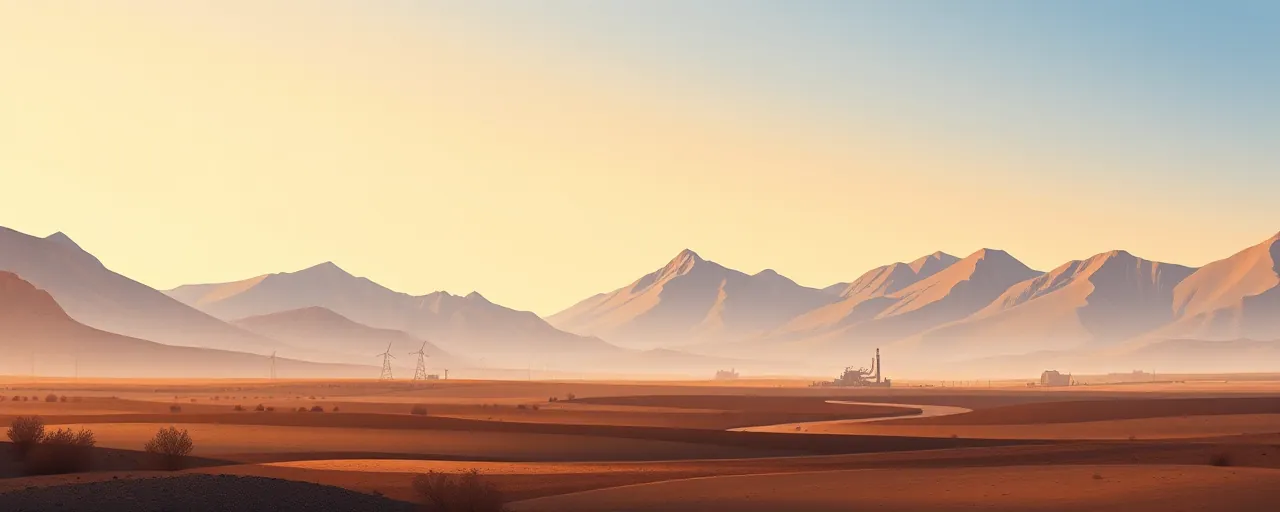A Pipeline Sparks Change in Humboldt County
In the rugged expanse of Humboldt County, Nevada, a new energy project is taking shape. The Bureau of Land Management has greenlit a 16-mile natural gas pipeline, set to connect the existing Ruby Pipeline to the North Valmy Generating Station. Announced on April 7, 2025, this decision marks a pivotal step in transforming the Valmy Power Plant from a coal-fired facility to one powered by natural gas. For local residents and energy workers, it’s a tangible shift, one that promises cleaner air but also stirs questions about the future of fossil fuels in a warming world.
The approval comes after an environmental analysis concluded the buried pipeline would have no significant impact on the surrounding area. Pinyon Pipeline Company, LLC, the firm behind the project, will construct and operate the 24-inch line through a patchwork of public and private lands. This mix, known as a checkerboard pattern, reflects a historical quirk of land ownership that continues to shape development in the American West. The stakes are high, not just for energy production but for the communities and ecosystems tied to these lands.
From Coal to Gas, A National Trend
The Valmy conversion fits into a broader movement across the United States. Since 2011, over 100 coal plants have either switched to natural gas or been replaced by gas-fired facilities, driven by tighter emissions rules and cheaper fuel costs. In Pennsylvania, plans are underway to transform the state’s largest coal plant into a natural gas hub by 2028, potentially integrating hydrogen down the line. These shifts cut greenhouse gas emissions compared to coal, often by half, while keeping the lights on during peak demand. For Valmy, the change means reusing existing grid connections, a practical move that sidesteps the hurdles of building anew.
Yet the transition isn’t without tension. Advocates for renewable energy argue that investing in natural gas locks in fossil fuel reliance when solar, wind, and other clean sources could take the lead. Meanwhile, energy companies point to gas as a reliable bridge, filling gaps when renewables falter. The Valmy project, like others, sits at this crossroads, balancing immediate needs with long-term climate goals. Historical data backs the trend, with natural gas overtaking coal in U.S. electricity generation since the mid-2010s, a shift fueled by technological leaps and market forces.
Navigating the Checkerboard Challenge
The pipeline’s path through checkerboard lands adds another layer of complexity. Dating back to the 19th century, this ownership pattern emerged from railroad grants meant to spur settlement. Alternating squares of public and private land now create a logistical puzzle for projects like this one. In Wyoming, similar areas have sparked disputes over wild horse management, with ranchers pushing for removals to protect grazing lands. In California, efforts to consolidate checkerboard parcels have aimed at better wildfire control and habitat preservation. For Humboldt County, the pipeline threads a needle between development and stewardship.
The Bureau of Land Management, tasked with overseeing public portions, has leaned on its pre-plan coordination policy to smooth the process. This approach brings developers, regulators, and locals together early to hash out concerns before permits are filed. It’s a strategy born from decades of evolving land policy, tracing back to the Federal Land Policy and Management Act of 1976, which set the stage for balancing resource use with conservation. Still, some worry that streamlined approvals might gloss over thorny issues, like methane leaks from pipelines, a potent climate risk that’s drawn scrutiny nationwide.
Weighing the Environmental Ledger
Environmental impact assessments lie at the heart of projects like Valmy’s. Rooted in the National Environmental Policy Act of 1969, these reviews weigh everything from wildlife disruption to air quality. For the pipeline, the finding of no significant impact hinges on its buried design and limited footprint. Compared to sprawling wind farms or hydropower dams, which can reshape landscapes and rivers, a gas pipeline’s effects are narrower. Yet the bigger picture looms, how does this fit into a world racing to cut carbon? Natural gas burns cleaner than coal, but methane leaks along supply chains can offset those gains, a point raised by environmental researchers.
On the flip side, supporters of the project highlight its role in grid stability. Natural gas plants can ramp up quickly, backing up renewables when the sun dips or winds stall. In China, pipeline expansions under the latest Five-Year Plan aim to shore up energy security, a goal echoed in the U.S. as gas complements an uneven shift to cleaner power. The Valmy pipeline, then, isn’t just a local story, it’s a microcosm of global energy dilemmas, where practical fixes jostle against the push for sustainability.
A Step Forward, A Look Ahead
For now, the pipeline’s approval signals progress in Humboldt County. Construction will bring jobs, and the power plant’s overhaul could extend its life, keeping energy flowing to homes and businesses. The Bureau of Land Management’s decision reflects years of refining how public lands serve multiple needs, from energy to conservation. It’s a pragmatic move, one that nods to the past, coal’s long reign, and eyes a future where gas plays a supporting role. But the story doesn’t end here, each project like this ripples outward, shaping how communities adapt to a changing energy landscape.
Questions linger as the dust settles. Will natural gas prove a stepping stone or a stumbling block in the quest for cleaner power? The Valmy pipeline offers no easy answers, only a glimpse into the trade-offs at play. Across the West, and beyond, people are watching, weighing what this means for their air, their land, and the years ahead. It’s a human story, after all, one of choices made under pressure, with stakes that hit close to home.
